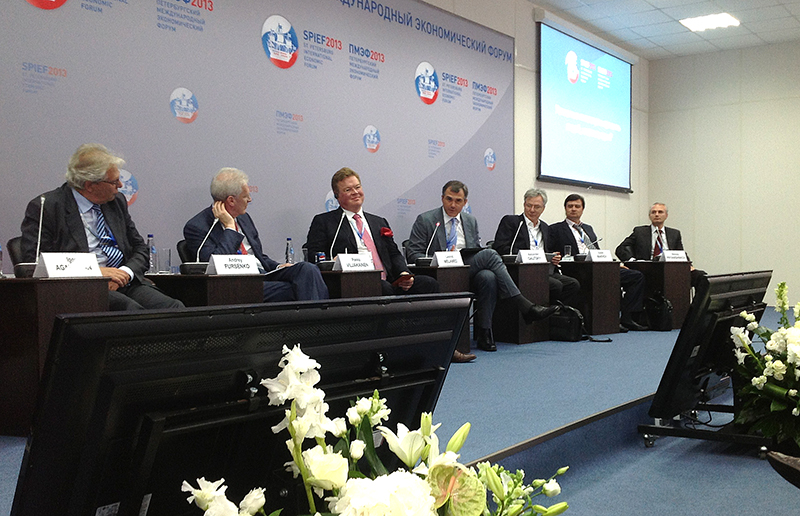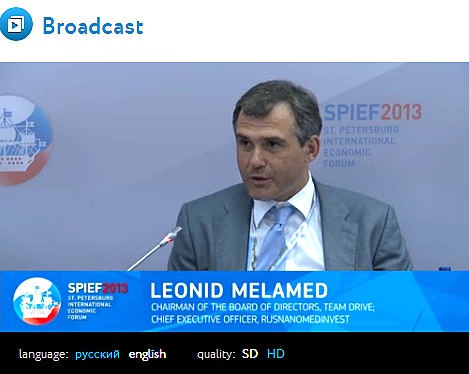
St. Petersburg International Economic Forum-2013. Bringing innovation to life: the death and resurrection of funding the next new idea
Print 24 June 2013
SPIEF 2013 Panel “Effective investments: where to get ideas, capital and people from?” has discussed what effective approach can be applied to the search for technologies and solutions to ensure the development of an innovative business and competitive advantages of Russia in the global market and possibilities to penetrate new market niches.
Leonid Melamed, Chairman of the Board of Directors, Team Drive, and Member of the Board of Directors, RMI and NovaMedica: The environment must be designed for delivering ideas and people for innovations; this objective and KPI of the Ministry of Education could be achieved through joining of several Russian universities the top 100 world universities".
"Today the President said in his speech that fixed KPIs will be established for government authorities and this really made my day. When discussing the topic now where to get ideas and people for innovations from, it seems logical to consider the following KPI for the Ministry of Education: within an obvious period to have a certain number of the Russian universities be joining the top 100 world universities subject to the most unbiased ratings.
Here I have three ratings; Moscow State University is rated only by several specialties and not as the university at large. This is unfortunate. And there is nothing to invent in particular; the search for specialists in the innovations sector will not yield any fruit, the basis will not be laid for them to come for “self-nurturing”, until our universities are in the top 100 list of the best universities in the world notwithstanding the size of financial, government support and any incentives.
Moreover, one should be aware of the long-term investment process. On the one hand, no quick wins are obvious; it will take much more time than expected. On the other hand, this may be considered a very important indicator, which has been a very strong parameter in positioning an educational level in the Soviet Union when accomplished. Ratings with our universities could not be seen, however, tens of our soviet universities have been recognized all over the world then – this is true.
This was a nutrient for creating a basis of the Soviet Union’s scientific-technical potential to be recognized globally. Now this potential is exported in many respects and keeps being exported. The process of its recreation is at lesser extent than we wish it could have been.
Let’s look at one the most popular citation indexes – Hirsch index. There is a database specifying different data on almost 2.5 thousand of the Russian scientists called “Who’s Who in Science”. So, to rate these scientist using the Hirsch index, most of them rated at the top, unfortunately, will appear to be not residents of Russia.
To develop an idea of this KPI further, it may be used as a “retainer”, an instrument to keep the most advanced scientists on the Russian grounds. In addition, I believe, well-known foreign scientists must be engaged to work in Russia. To elevate scientific institutions to higher standards of work, knowledge, research and to upgrade equipment to the intent that our scientists would have an interest in staying and foreigners would like to work in here".
Watch full record on SPIEF 2013 website.
All Portfolio
MEDIA CENTER
-
The RMI group has completed sertain projects
The RMI Group has exited from the capital of portfolio companies:
Marinus Pharmaceuticals, Inc.,
Syndax Pharmaceuticals, Inc.,
Atea Pharmaceuticals, Inc.


